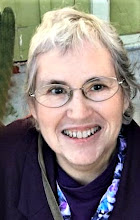 “All this time the
Guard was looking at her, first through a telescope, then through a microscope,
and then through an opera-glass.”
Lewis Carroll
“All this time the
Guard was looking at her, first through a telescope, then through a microscope,
and then through an opera-glass.”
Lewis CarrollThursday, August 23, 2012
Connect With Maps
 “All this time the
Guard was looking at her, first through a telescope, then through a microscope,
and then through an opera-glass.”
Lewis Carroll
“All this time the
Guard was looking at her, first through a telescope, then through a microscope,
and then through an opera-glass.”
Lewis Carroll
Alice does not change being Alice despite the various ways
in which she is being observed, but the perception of her is altered by the
method by which the Guard chooses to see her.
Just as images and word pictures feed our imagination
through metaphors, so can a study of map-making enlarge and enrich our
connections with the places we inhabit. In his book, the Geographer’s Art,
Peter Haggett says that, “If the
historian uses mirrors to look back and the physicist uses mirrors to look
forward, then the geographer’s use of the mirror analogy lies in a different
dimension—that of space.” What exactly do we see in that space regionally and
historically? Are places mapped by linear distance as in a conventional map or
by spatial configuration?
Haggett gives an example from a vacation he once took at a
lakeside village nestled in the Austrian mountains. As he traveled back and
forth across the lake by boat he realized that the lakeside did not quite
measure up to the conventional map. Some routes he took were fast routes and
others slow. Which speed was taken would influence the map form or scale of the
lake. He put together four different sketches to try to determine how nine
locations reflected or related to the lake itself based on: distance, time of
journey, cost of journey and frequency of service. He concluded that each map
showed a “different aspect of the spatial
structure of this settlement.” His experiment on vacation opened up a whole new outlook on
how maps can measure location and identity of place.
Today we can click our computers for directions and are
given a choice to find a destination by conventional map, or street view or
aerial. Why do we choose which version we do? How does your character approach
space in his world? Why does it matter what she sees?
Journal Prompt:
1. Visit
a favorite place of your own where you like to sit and watch the view. Take a
pair of binoculars and a magnifying glass. Pick one focused spot and look at it
intently for a few minutes each time using first your own natural sight and
then each of these lenses.
2. Write
down the differences you see with each one.
Share: Did you see
something you’ve never noticed before? Can you adapt the experience for your
character?
Subscribe to:
Post Comments (Atom)








No comments:
Post a Comment